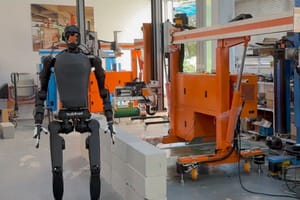The global contactless payments market is estimated to account for $26.3 billion by end of 2027.
Touchless or contactless systems offer a new level of convenience and ease of use while also addressing pathogen and virus transmission issues at access points, point of sale, and machine control. Touchless systems receive commands through speech, user actions, facial patterns, or physical activity (eg., hand gestures). Signals are processed and interpreted by the systems, which then execute the desired action for the user based on pre-programmed algorithms.
Touchless technology improves employee, shopper, and visitor experiences, integrated with artificial intelligence, biometric technology, the Internet of Things (IoT), and cloud connectivity. It simplifies attendance and also ensures consistent customer support while improving the efficiency of administrative resources.
Location-based marketing makes excellent use of touchless technology, tailoring the message to a person's proximity to a shopping kiosk or counter. Contactless solutions also help you improve local marketing efforts significantly. Customers can be engaged without coming into contact with them and allowing them to transact with a brand, a feature that is essential during the pandemic.
Abdulqader Ali, CEO of Smartworld said:
"Contactless technology is limited only by imagination. Yes, Covid-19 has accelerated the demand, but in actuality, contactless technology is revolutionizing the science of transactions, and eliminating the stop-and-go aspects of identity confirmation."
Payment apps
Contactless payments are made by tapping or waving a contactless device - usually a card or smartphone with NFC or RFID capabilities - over a point-of-sale terminal or reader. Key fobs, stickers, phones, and wearable devices, including wristbands and watches, are all popular contactless payment devices. Consumers can tap to pay and be on their way, making them a quick and easy way to pay. In addition to speeding up the checkout process, contactless payment technology can help enhance customer experience and operational performance.
Air travel
Airlines are continuing to build and advance technological solutions to assist passengers with ticketing, check-in, and baggage drop service. Passengers simply scan a QR code with their mobile device at the kiosk. This protects the passenger from contact with surfaces while also allowing them to print boarding passes, luggage tags, and other essential travel documents.
Hospitality
Contactless experiences have been the primary target of leading players in the hospitality industry since Covid-19. Contactless bookings, payments, check-ins, and in-room voice assistants all create a better user experience while also reducing staffing. In their customer journey, hoteliers examine all of the various touchpoints between staff and customers. They also identify places where contactless technology can be used to minimize publicity while maintaining the brand's distinct identity.
A growing number of companies in the accommodations industry, including subscription-based business models such as Airbnb, are empowering to book and pay for a suitable room right before they arrive in the lobby with a contact-free experience. Upon arrival, customers pass security and head straight to their rooms. You can use the hotel's mobile app to unlock the door, control the temperature, switch on the television, and much more. To assist you with simple tasks and requests, most hotels have Google Assistant or Amazon Alexa installed in the bed.
Canonical Link: https://www.khaleejtimes.com/business/kt-network/smartworlds-contactless-technologies-are-redefining-customer-experience
Copyright © 2021 Khaleej Times. All Rights Reserved.









